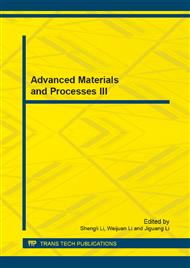p.973
p.979
p.985
p.990
p.996
p.1000
p.1004
p.1008
p.1015
Experimental Study on Surface Roughness in Quick-Point Grinding Engineering Ceramics
Abstract:
Through grinding experiment on mica glass ceramic, the mechanism of material removal was analysed, the fracture and removal of engineering ceramics was suitable for Griffiths fracture strength theory. And the factors of affected surface roughness were studied. The results indicated, The surface roughness was significantly affected by the grinding depth, inclining angle and deflecting angle in quick-point grinding engineer ceramics. The surface roughness value decreased with increasing of the wheel velocity, increased with increasing of the workpiece feed, decreased with increasing of grinding depth, increased with increasing of grinding wheel inclining angle and decreased with increasing of grinding wheel deflecting angle.
Info:
Periodical:
Pages:
996-999
Citation:
Online since:
September 2013
Authors:
Price:
Сopyright:
© 2013 Trans Tech Publications Ltd. All Rights Reserved
Share:
Citation:


